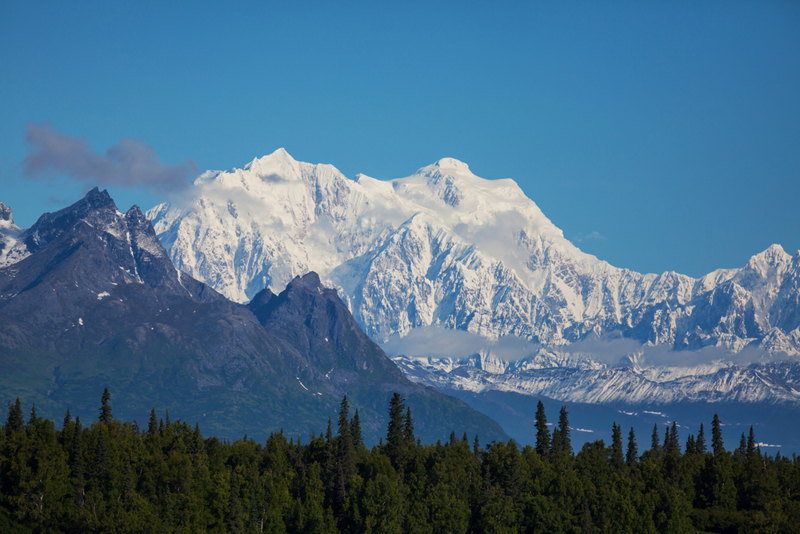
Mount McKinley, officially known as Denali, is the highest peak in North America, standing at an awe-inspiring 20,310 feet (6,190 meters) above sea level. Located in the Alaska Range in Alaska, United States, Denali is not only a prominent feature of the Alaskan landscape but also a symbol of natural beauty and adventure.
Over the years, this colossal mountain has captured the imagination of mountaineers, nature lovers, and adventurers from all over the world. In this article, we will explore the history, significance, and allure of Denali, while also addressing frequently asked questions about this majestic peak.
History and Naming of Denali
Denali has a rich history, both culturally and geographically. For centuries, it was known to the native Koyukon people as “Denali,” which means “The High One” or “The Great One” in the Koyukon language. However, when European explorers first encountered the mountain, they named it after William McKinley, the 25th President of the United States, in 1896. The name “Mount McKinley” stuck for decades, despite local and indigenous calls for the original name to be reinstated.
In 2015, after years of advocacy from Alaskan officials and Native American groups, the U.S. Department of the Interior officially changed the name back to Denali, honoring its cultural significance. The name “Denali” is now recognized worldwide, symbolizing the peak’s importance to the native Alaskan people.
Geological Features and Significance

Denali is part of the Alaska Range, a mountain chain that stretches for over 600 miles through the interior of Alaska. The mountain was formed through a combination of tectonic activity and glaciation. The Alaska Range is the result of the ongoing collision between the Pacific and North American tectonic plates, which causes the land to uplift and create the rugged, dramatic landscape of the region.
Denali’s towering height and prominent position make it an important geographical feature in North America. Its summit stands 2,000 feet (610 meters) higher than the next tallest mountain in the continent, Mount Logan in Canada. The mountain’s extreme height and location also make it a challenging peak to climb, with harsh weather conditions and technical difficulty posing significant obstacles to climbers.
Denali’s Unique Features
One of Denali’s most striking features is its prominence. Prominence refers to the height of a mountain’s summit above the surrounding terrain, and Denali has one of the highest prominences in the world. Denali’s summit rises dramatically from its base, making it visible from hundreds of miles away.
Denali’s extreme elevation also means it is surrounded by glaciers, and its ice fields are an essential part of the mountain’s ecosystem. The glaciers that flow from the mountain provide critical water sources to the region, influencing local climate and wildlife.
Denali’s northern face is considered one of the most difficult and dangerous routes for mountaineers, as it is steeper and more exposed to the elements than other sides of the mountain.
Mount McKinley (Denali) Climbing History

Climbing Denali is a coveted achievement for mountaineers worldwide. The first successful ascent of Denali was made in 1913 by Hudson Stuck, Harry Karstens, Robert Tatum, and Charles Houston. The climb, while significant, was far from easy, as the team had to contend with harsh weather, steep inclines, and deep snow.
Today, thousands of climbers attempt to summit Denali each year, though only a small percentage successfully make it to the top. The climb is notoriously challenging due to the extreme altitude, cold temperatures, and unpredictable weather.
The standard ascent route, the West Buttress, is known for its technical difficulty and requires mountaineers to have strong mountaineering skills, experience with glacier travel, and the ability to survive in extreme conditions.
One of the primary challenges of climbing Denali is dealing with the mountain’s weather. Due to its location in Alaska, Denali is subject to extreme temperature fluctuations, strong winds, and frequent snowstorms.
The average temperature at the summit can range from -20°F (-29°C) to -40°F (-40°C), even in summer months. Climbers must prepare for these conditions by packing specialized gear and supplies to ensure survival during their expedition.
Denali National Park and Preserve
Denali is located within Denali National Park and Preserve, a vast protected area in central Alaska. The park spans over 6 million acres of wilderness and is home to diverse wildlife, including moose, wolves, grizzly bears, and caribou.
Visitors to Denali National Park can explore the stunning natural beauty of the region through hiking, wildlife viewing, and scenic drives. The park also offers opportunities for climbing Denali, though permits are required, and the process can be highly competitive.
The park’s centerpiece, Denali itself, attracts not only climbers but also tourists interested in experiencing the beauty of Alaska’s wilderness. The landscape of Denali National Park features pristine forests, tundra, and glacial rivers, providing visitors with unparalleled opportunities for outdoor exploration and adventure.
Frequently Asked Questions (FAQs)
1. What is the height of Denali?
Denali stands at 20,310 feet (6,190 meters) above sea level, making it the highest peak in North America.
2. What is the significance of the name “Denali”?
Denali means “The High One” or “The Great One” in the Koyukon language, which is spoken by Native Alaskans. The name was officially reinstated in 2015 after being changed to Mount McKinley in 1896.
3. When was Denali first climbed?
The first successful ascent of Denali occurred in 1913 by Hudson Stuck, Harry Karstens, Robert Tatum, and Charles Houston.
4. What is the most popular route to climb Denali?
The most popular climbing route on Denali is the West Buttress, which is known for its technical difficulty and requires advanced mountaineering skills.
5. What kind of wildlife can be found in Denali National Park?
Denali National Park is home to a variety of wildlife, including grizzly bears, wolves, moose, caribou, Dall sheep, and hundreds of bird species.
6. What is the weather like in Denali?
Denali’s weather can be extremely harsh, with temperatures ranging from -20°F (-29°C) to -40°F (-40°C) at the summit, even in summer. The mountain also experiences high winds and frequent snowstorms, making climbing conditions unpredictable.
7. How difficult is it to climb Denali?
Climbing Denali is extremely difficult and requires technical skills, physical fitness, and experience with high-altitude mountaineering. The extreme weather conditions and altitude make it a challenging and dangerous climb.
8. Can tourists visit Denali National Park?
Yes, tourists can visit Denali National Park to experience its beauty through hiking, wildlife viewing, and scenic drives. However, permits are required for those wishing to climb Denali.
Conclusion
Denali formerly known as Mount McKinley stands as one of the world’s most iconic peaks, with its towering height, rugged terrain, and rich cultural history. Its status as North America’s highest mountain and its challenging climb have made it a beacon for adventurers and mountaineers around the globe.
For those who venture to Denali, it offers not only the thrill of a difficult climb but also the opportunity to witness the raw beauty of Alaska’s wilderness. Whether you are a seasoned mountaineer or a nature enthusiast, Denali remains a powerful symbol of the majesty and mystery of the natural world.






